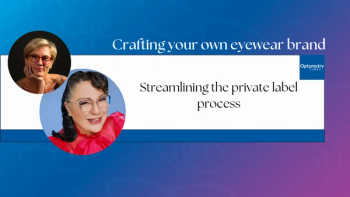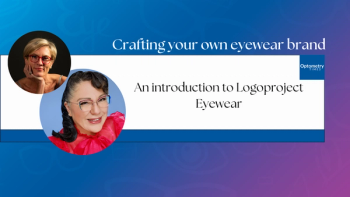
This week in optometry: August 21-August 25
Catch up on what happened in optometry during the week of August 21-August 25.
Catch up with what Optometry Times®' shared this week:
Optometry news
Geographic atrophy is a major concern in eye health
Mohammad Rafieetary, OD, FAAO, FORS, Dipl ABO, ABCMO
Until recently, when most eye care professionals encountered a patient with
True, we discussed lifestyle modifications, dietary supplements, self-monitoring or remote monitoring of monocular vision, and low-vision aids, but we shied away from any meaningful discussion about dry AMD.
Is it AMD or vitelliform?
Euin Cheong, OD
Various macular dystrophies can resemble AMD due to the variety of clinical signs and symptoms. Clinicians may find it challenging to differentiate between the retinal conditions. Examples that are commonly confused with AMD include adult-onset foveomacular vitelliform dystrophy (AOFVD), polypoidal choroidal vasculopathy, butterfly-shaped pattern dystrophy, and cone dystrophy.
AMD is frequently misdiagnosed as AOFVD. Although there are distinguishing features, it is challenging to tell them apart due to similarities in the early stages. We will concentrate primarily on the distinctions and similarities between AOFVD and AMD.
Sjögren Syndrome: A three-part DED treatment plan and insights from a unique case
Selina R. McGee, OD, FAAO, Dipl ABO
Patients with Sjögren syndrome present some of our toughest
Because my colleagues and I have worked hard to raise awareness of how Sjögren syndrome affects the eyes, we see referrals from many doctors in our community, as well as patients who seek us out for DED treatment, unaware that they have Sjögren syndrome. These patients are often suffering terribly, so we ask the right questions and take an aggressive approach to treatment. Here are some insights from a recent case, as well as diagnostic tips and a 3-step approach to treatment.
Tarsus announces Xdemvy availability at pharmacies nationwide
Emily Kaiser, Assistant Managing Editor
Tarsus Pharmaceuticals announced that lotilaner ophthalmic solution (Xdemvy) 0.25% is now ready for prescription as it is available at pharmacies nationwide. The eye drop
“We are delighted that within weeks of FDA approval, XDEMVY is now available to millions of patients with Demodex blepharitis,” Bobak Azamian, MD, PhD, Chief Executive Officer and Chairman of Tarsus, said in a press release.
“The efforts of our team have created incredible interest in XDEMVY, the first and only approved solution for this highly prevalent disease. I’m so appreciative of our team and our partners who’ve worked diligently to bring this product to eye care providers and patients quickly and seamlessly following regulatory approval. We are proud to introduce XDEMVY to the eye care community and look forward to its potential to significantly change the way this disease is treated.”
Cyropreserved amniotic membrane option for management of DED, NK
Beeran Meghpara, MD
Prolonged stress and unresolved inflammation can cause a vicious cycle that worsens the condition, leading to chronic DED.3 DED may also disrupt neural signaling from the ocular surface to the central nervous system, leading to progressive loss of corneal nerve density and eventual formation of neurotrophic keratitis (NK).2
NK is a degenerative
Newsletter
Want more insights like this? Subscribe to Optometry Times and get clinical pearls and practice tips delivered straight to your inbox.













































.png)


